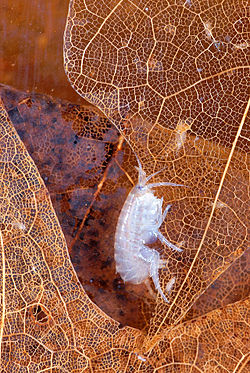| Hyalella | |
|---|---|
 | |
| Hyalella azteca | |
| Scientific classification | |
| Domain: | Eukaryota |
| Kingdom: | Animalia |
| Phylum: | Arthropoda |
| Class: | Malacostraca |
| Order: | Amphipoda |
| Family: | Hyalellidae |
| Genus: | Hyalella S. I. Smith, 1874 [1] |
Hyalella is a genus of amphipods found in the Americas. They are mainly found in freshwater habitats.